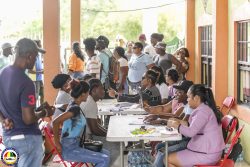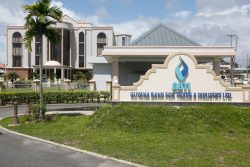According to a Government Information Agency (GINA) press release the team, including Region Three Chairman Julius Faerber met with farmers who made several suggestions about how the team can support them, particularly to help them maintain their livestock. In response, Jagdeo reminded them that interventions are costly and that the government could not satisfy every farmer’s request. On enquiring about the state of cash crops in the area, farmers said they have not been severely affected.
According to GINA since May, many areas countrywide have been experiencing 50 to 60 per cent below the long-term average rainfall. The Ministry of Agriculture’s Hydromet Service said that most international climate models indicate that the current El Nino episode will be at its peak between January and February.
It is expected that during February to early April the current trend of reduction in rainfall is likely to continue over Guyana, with higher probabilities of drier conditions.
The release said on Sunday Jagdeo told Essequibo farmers that $258M will be set aside to boost the ministry’s efforts to bring relief to farmers affected by El Nino. The money will be used to buy planting materials for cash crop and other farmers and potable water tanks to communities in desperate need. The president also urged farmers to become more knowledgeable about the phenomenon and on a previous occasion, called on them to take tough action and make sacrifices.
The Canals Polder has been the target of an Agricultural Export Diversification Programme (ADP) that seeks to augment agriculture production through the rehabilitation of existing drainage and irrigation infrastructure such as bridges, check structures, primary and secondary regulators, sluices, relief structures and fair weather roads.
In April 2008, government signed a US$21.9M agreement with the Inter-American Development Bank for the five-year ADP. The objective was to create opportunities for increased income generation in the area through agriculture production.
Government’s contribution to the project was the execution of 60 per cent of earthwork by the National Drainage and Irrigation Authority followed by the rehabilitation of control structures and access roads.






